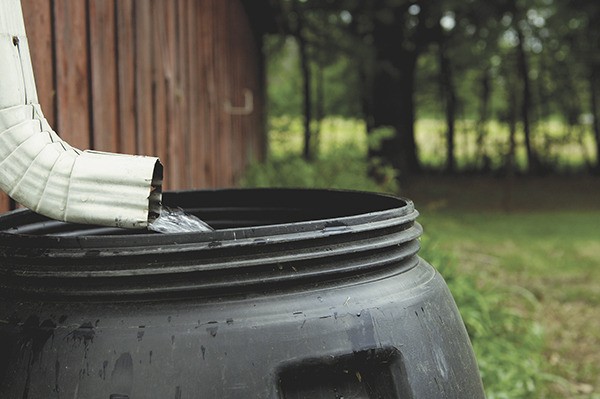By JENNY BELL
Q: How long do we have to continue to pull out increasing quantities of water from our watershed before irreparable damage to our environment is done? How long do we have before we must turn toward an alternative water supply instead of solely relying on our underground water and our streams?
A: No time. We must act now!
There are many examples of a mistaken belief in just how much water a community thought they had. Just look north to the San Juan Islands where, on an island just like ours, they overdrafted their aquifer and saltwater came in instead.
I am a commissioner on the board of Water District 19, Vashon’s largest water supplier. If you think a water district’s only job is to sell water, you might think it’s odd to be helping the community to get water from elsewhere. “Elsewhere” is from places like the rainwater we can catch from our roofs or the used water from our laundries, showers and bathtubs (greywater). I want to encourage us to become “water-focused” people who work for all the “water users” — not just the inhabitants of the island, but also the non-voting creatures of the land and sea. All water-using beings are part of an ecosystem where having plenty of quality water isn’t an “optional extra.”
Alternative water supply fits right in with the mission of Water District 19: “To provide a sufficient quantity of good quality water at a reasonable cost to our members, in perpetuity.” There are a lot of subjective terms in that statement that we need to work out both as individuals and as a community. The big phrase of this mission is “in perpetuity” — that means forever. Forever requires reliance on sustainable water sources or making sure that the water sources we use are not being depleted. What we do with water should be able to be done over and over again with no harm to the system.
Alternative water supply is the pathway through. We want to encourage local growing, but summer brings no rain and our plants need water at a time when no water is going into the system. This is like taking money out of the bank for a whole season without putting any back in. We are all drinking from the same cup, and if we take more when there is less, we take from another part of the system — that is, another water user. A fish can’t decide to use less. To get water from “elsewhere” in the summer is to work with nature instead of against her. Doing more with less water is also a good strategy. This is a great time to conserve, as Water District 19 will be reviewing pricing policy to reward efficient users. Time to do things like put a brick in your toilet tank to reduce the quantity of water you flush.
Spring is preparation time for water-focused people. Our graphs show we extract much more water in the summer months, likely for irrigation. The water-focused people are getting busy like bees this spring and preparing to get water from “elsewhere” for their summer watering. King County Public Health is actively working with us. They are in the midst of reviewing greywater reuse policy and are considering an island-wide exemption from needing a permit for the simplest “laundry-to-landscape” system. Stay tuned. In the meantime, let’s get busy.
Tonight I am holding a free workshop on greywater at the library. The only cost is that you pass on the information about greywater to at least one other person. Imagine how quickly we can transform our practices and take the weight off Mother Nature. Too often we act too late and don’t realize we have overdone it until we have no recourse. Have you heard the story that a frog will not leave a pot of water as the temperature is raised gradually, all the way to boiling point, until the consequences are fatal? There are so many examples of slow environmental response all around us — remember the San Juan Islands mentioned earlier? Thomas Fuller said, “You never know the worth of water till the well is dry.” We want to be ahead of the game here and give everyone “water-focused” corrective lenses so we don’t go water blind … and thirsty.
— Jenny Bell is an independent water consultant and a commissioner for Water District 19.


